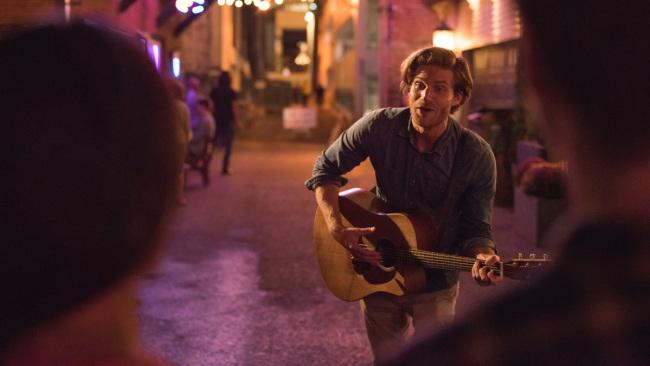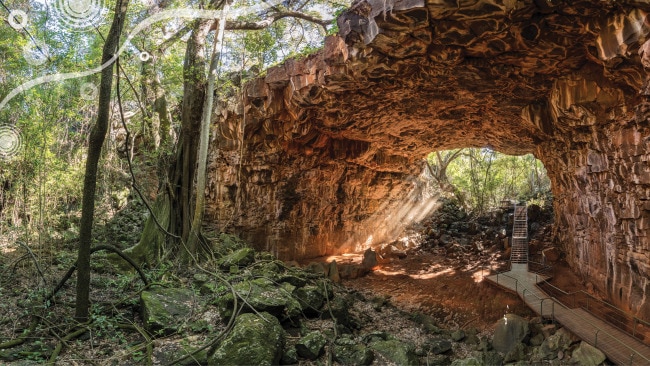Cruising America's famous music highway
IF YOU are a music lover, this is the only road trip you need to take to truly appreciate USA’s rich music history.

For music lovers, the road between Memphis and Nashville is hallowed ground. That stretch of Interstate 40 is known as the Music Highway, the epicenter of rock ’n’ roll history. From the spirit of gospel to the birth of blues; the hot heat of jazz to the rebel yell of rockabilly; and the birth of rock to the explosion of soul, all roads lead back to the I-40; back to Music Highway, Tennessee.
MEMPHIS
The ultimate music road trip begins where the blues began, in Memphis. The city hugs a long, slow bend of the Mississippi River, small yet mighty and but teeming with life. Seven nights a week, music pours from the bars lining Downtown’s historic Beale Street, which in the early 20th century was a bustling black neighbourhood where cotton field workers came to play. While gospel spilled from the Beale Street Baptist Church, the juke joints hosted young legends in the making, from Louis Armstrong to Muddy Waters and Memphis Minnie, and later the Beale Street Blues Boy, who became known as B.B. King.
Just a few blocks from Beale Street is one of the best-known sites in music history, the official “Birthplace of Rock ’n’ Roll”, Sun Studio, where Elvis was crowned The King. Howlin’ Wolf, B.B. King and Ike Turner all made records at Sun Studio in the early ’50s, but when a teenage Elvis walked through the door in 1953, the Earth turned. He recorded his first hit at Sun Studio in 1954, That’s All Right Mama, harnessing the Memphis sound and turning it into a global tsunami. Soon after Elvis, the studio cut records for Carl Perkins, Jerry Lee Lewis and Johnny Cash. In 1956, Elvis joined these three titans at Sun Studio for a legendary one-off recording session – dubbed the Million Dollar Quartet – and you can stand in the very room where it happened.
If Sun Studio is where the Elvis legend began, Graceland is where it took flight, and no visit to Memphis is complete without a dreamy, voyeuristic tour through his estate. The colonial revival mansion in South Memphis that was home to The King and his family from 1957 until his death in 1977, is where Elvis’ body is buried. Surreal, serene and frozen in time, Graceland is pure magic — a kitsch pilgrimage through a life and career that touched a billion hearts.
For die-hard Elvis fans, a less trafficked treat lies two hours out of Memphis, in Tupelo, Mississippi. There you’ll find the two-room ‘shotgun’ shack where Elvis lived as a child — a humble shadow of Graceland, with a porch swing still moving in the breeze. In the middle of town is the Tupelo Hardware Company where Elvis’ mother bought him a $7 guitar as a present for his 11th birthday.
Back in Memphis, another strain of music history is preserved at the Stax Museum of American Soul Music. Built around the Stax Records recording studio, this phenomenal collection tells the story of “Soulsville, USA” as Memphis was known in the late 1960s, showcasing the history of Stax legendary artists including Otis Redding, Booker T and the MGs, and Isaac Hayes, who donated his gold Cadillac to the collection.
BROWNSVILLE AND JACKSON
Around 100km northwest of Memphis lies Brownsville, Tennessee, home of the famous Delta bluesman, Sleepy John Estes. The shack where Estes spent his youth forms part of the West Tennessee Delta Heritage Centre, which pays tribute to the early 20th century artists who pioneered the blues, carrying the sound from sharecropper farms, through Memphis, to the world. The Heritage Centre in Brownsville also houses the Tina Turner Museum at Flagg Grove School, in homage to the superstar who was born in nearby Nutbush. The collection is held in a former single-room schoolhouse where Turner, then known as Anna Mae Bullock, went to school in the late 1940s.
A little further along the I-40, the town of Jackson comes into view, and with it the dawn of rockabilly music, made famous by Jackson native Carl Perkins. The star who wrote Blue Suede Shoes was at the forefront of a genre blending blues rock and country, bringing rollicking energy to radio airwaves around the world in the early ’50s. Jackson is home to the International Hall of Fame and Rockabilly Museum, honouring musical pioneers including Perkins, Buddy Holly, Elvis, Johnny Cash, The Jordanaires and Brenda Lee. You can also pay your respects at the gravesite of blues harp legend Sonny Boy Williamson, which lies peacefully on the south side of town.
NASHVILLE
Strap on your cowboy boots and get ready to holler, because the I-40 Music Highway ends in Nashville, Tennessee. Today, Nashville is a major hub for the American music industry and artists of many diverse genres call it home, but the “Music City” built its reputation on fiddles, slide guitars and honky tonk.
Tracing country from its folk and gospel roots through to its 21st century megastars, The Country Music Hall of Fame and Museum is fascinating. Whether or not you love twang, it draws you into a rich and historically significant music tradition, illustrated with thousands of artifacts, images, oral histories and musical recordings. Across the street, the Music City Walk of Fame features tributes to the many stars that have played a part in this story, from Dolly Parton and Loretta Lynn to Tim McGraw and Faith Hill. Just up the road, the Johnny Cash Museum pays compact but fascinating tribute to the Man in Black, including a large archive of Johnny Cash covers performed by other famous musicians.
Originally published as Cruising America's famous music highway


